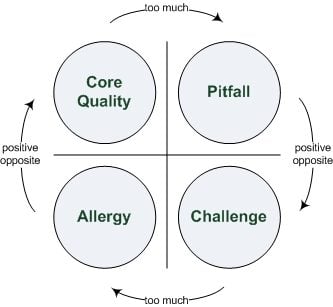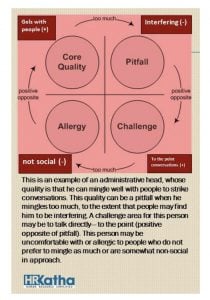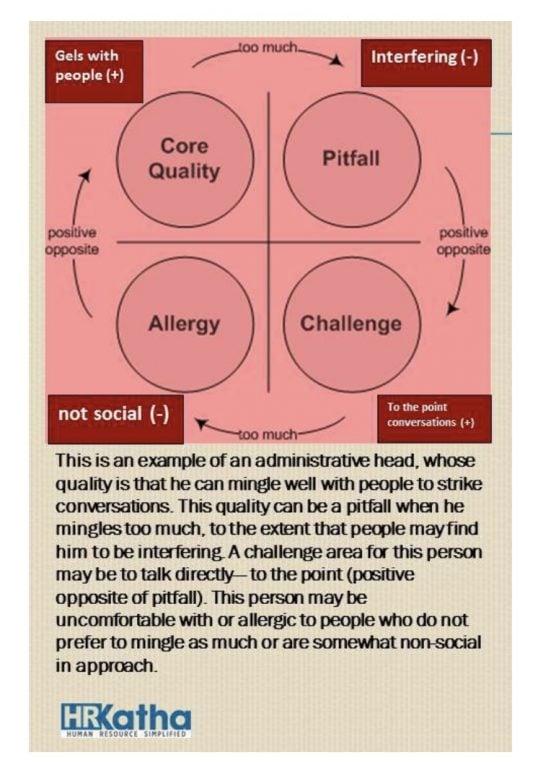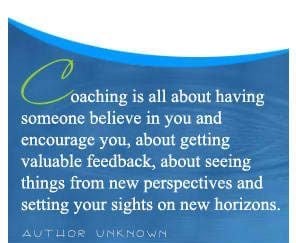Oct 26, 2020 in Life Coaching
When Your Positive Qualities Work Against You
The articles talks about the core quadrant model that talks about how positives can lead to challenges in life and work
It's your turn now! Let's support each other by clicking "Helpful".
+1

DISCUSS #Relationship
DISCUSS #Parenting
Have you ever taken pride in the fact that you are such a flexible and easy going leader, but still wondered why your colleagues prefer you to be more structured and direct at times? I also know of a software engineering client’s project leader, who proudly claimed to be very frank and honest in interacting with the team. Weeks later, I met his team as their learning partner and heard comments that he actually comes across as impolite and harsh at times! This feedback also reached him in one of the 360 degree feedback sessions. He was naturally upset that the very qualities he was proud of were being seen as negative. He felt that his colleagues were conspiring against him. After all, he truly believed he was an honest communicator and did not need to change his values or qualities. We all may have, at some point in our careers or personal lives felt offended in a similar manner owing to our ‘positive’ qualities, for instance being punctual, kind, honest, straight forward, reserved, friendly, intelligent, and so on. Have you ever experienced a situation where your own qualities, which you are proud of, often go unappreciated, and undeservingly miss the limelight? Have you realised that , in fact, people seek in you qualities opposite to what you possess and are proud of? If yes, then it’s time to introspect the rationale behind this phenomenon. This can often pull away your positive energies at work or home, unless your self-awareness levels are very high. Your key qualities can at times be misled by your brain to give out exaggerated signals. For instance you may be a punctual person, which is a positive quality. However, when you focus too much on punctuality, you may often land up at meetings well before time, and be ready with project deliveries much before the others are even prepared to contribute or play their part in it. People whose brains do not belong to the league of being ‘punctual’ as much as you are may tag you as ‘finicky’ or fussy. At times, people may want you to be more accommodating and easy going when it comes to time. And you may be left wondering what’s wrong with being punctual! Let us look at the Core Quadrants Theory to understand this better. Relatively new to the world of behavioral studies, the Core Quadrants concept is also known as the Ofman Methodology (1992), which is mainly used to examine how a person operates on a personal level. We will try and link this insightful concept with neuroscience and people management skills. The first step is to understand and identify any core quality that you possess— it should be something that others should be able to appreciate about you to some extent. To validate if you have chosen the right quality, ensure that it is a quality that you ideally expect others to also possess. Steps to create a Core Quadrant for Self Step 1- Quality: Let us pick ‘accuracy’ as a quality you possess that reflects in anything you do (at work and at home). You have a knack for being absolutely correct and accurate. Put this in the top left quadrant. Step 2- Pitfall: Now think of a continuum scale and choose the higher limit of your quality. What if you lay too much emphasis on accuracy? You may become too fastidious or find faults for others on the smallest details and point out unnecessary errors in everything. This trait will be easily observed by others working with you and it may happen that instead of appreciating your accuracy, they may only be able to observe your fussy nature for numbers or minute details. Put this pitfall in the top right quadrant. Step 3- Challenge: Now identify the positive opposite of the pitfall—which will be an area of challenge for you. If someone is too fussy and accurate for details, they may lose out on the practical and creative aspects. Therefore, contributing a lot to ‘creativity’ and/or ‘spontaneity or value addition’ could be a challenge for people whose core quality is accuracy. Write ‘challenge’ in the bottom right quadrant, below the identified pitfall. Step 4- Allergy: Allergy refers to the highest peak of the challenge on the continuum. If creativity is a challenge, then too much of creativity and improvisation could lead to ‘tentativeness’ or ‘approximation’ or ‘confusion’ in the task. So any kind of confusion could be an allergy for this person. Allergy is usually the opposite of the quality. It is important to know that the positive opposite of the allergy is your core quality again. Too much of any positive quality can lead to your pitfall zone (what others blame you for). Too much of positive opposite of pitfall is the area, which is a challenge or something that you may struggle to do (what others wish you had). Too much of the challenge attribute is your allergy (something you do not like in others). The diagram illustrates this. You can start from the allergy aspect and find out your quality and vice versa. If you know someone who gets irritated when someone shares too many details or is talkative (allergy), then listening well could be a challenge for that person. Now that you know the concept and theory of core quadrants, try to apply this to yourselves by thinking of some of the genuine qualities you possess. This will enable you to be aware of your pitfalls, if any, and how you can avoid getting into the pitfall zone. For instance, if you are a risk taker, then avoid getting into the ‘careless’ zone as pitfall and try and balance your quality well. Often, the positive opposite of pitfall is an area where you feel you may need to work at. So, core quadrants can be used as an effective self-awareness tool. It can also be useful to understand why certain people appear to behave in an irritating (read allergic) manner each time you interact with them. This is because, they are different and may simply be operating from a core quality different from yours. The leader we discussed in the beginning of this article, whose quality was honesty in communication, may have, over the years, developed a pitfall of being brutally honest to the extent of being rude sometimes. His challenge may be to talk in a manner that keeps the other person’s values in perspective. Effective communication, in an emotionally intelligent manner, may be a challenge for him and people who talk with too much balance. People who are too prepared with words may appear fake to this person, and will he will be allergic to them. Eventually, the leader will suffer due to lack of self-awareness and unwillingness to accept the pitfalls of the core quality. A team member who is flexible in approach should also pause and think whether the colleagues are benefiting from flexibility or whether they need a more structured and organised person for the task at hand. The positive opposite of too much flexibility will be consistency, which could be a challenge for a flexible person. Rigidity will an allergy for him. The ignorant person will often stand wondering what’s wrong with the world around them. Only a self-aware professional knows the importance of balancing and flexing their skills at the right time with different people. This is what differentiates a successful worker from an effective professional in most cases. According to neuroscience, our brain is making new connections on the basis of the information we feed it. Therefore, a timely response and self-awareness exercise on our pitfalls will help our brain make new connections and prompt it each time we move into the pitfall zone. It will make us realise our challenge area (read improvement area) more promptly. The moment Rajan realises that his quality of helping others and being dependable is going way beyond what he can handle in a day, the brain will signal him that he is moving in the pitfall zone, if he has introspected well on the core quadrants, and wants to work towards change. If saying ‘No’ to people is an identified challenge, then Rajan will be able to cope better and try out different techniques ranging from delegation to asking for extended timelines and politely declining extra tasks. - Astha Sharma, ACC, Life Coach (published in HRKatha)











 Thank you for your help!
Thank you for your help!